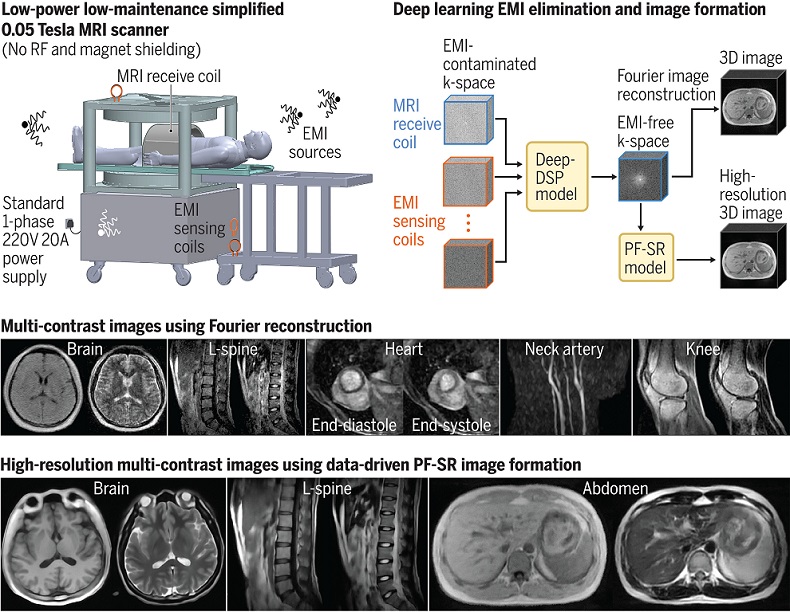Low-Cost Whole-Body MRI Device Combined with AI Generates High-Quality Results
Posted on 10 May 2024
Magnetic Resonance Imaging (MRI) has significantly transformed healthcare, providing a noninvasive, radiation-free method for detailed imaging. It is especially promising for the future of medical diagnosis as it integrates with artificial intelligence (AI). Yet, after fifty years of development, MRI technology is still largely out of reach for many, particularly in low- and middle-income countries, mainly because of the prohibitive costs of standard superconducting MRI machines and the specialized infrastructure they require. These machines are typically located in specialized radiology departments or large imaging centers, which limits their presence in smaller healthcare facilities. Furthermore, the need for radiofrequency (RF)-shielded rooms and high power demands also restrict the broader adoption of MRI technology. Now, a new study has shown that machine learning can enable low-power MRI systems that are both cheaper and safe, without compromising on diagnostic accuracy.
The findings of the study by researchers at The University of Hong Kong (Hong Kong SAR, China) mark a significant step forward towards creating affordable, patient-oriented, and deep learning-enhanced ultra-low-field (ULF) MRI scanners. These innovations aim to fulfill the clinical needs unmet in various global healthcare environments. To overcome barriers to MRI access, the team designed a ULF MRI scanner that is both low-power and simplified for easier use. It operates off a standard wall outlet and does not require RF or magnetic shielding. This scanner utilizes a modest 0.05 Tesla (T) magnet—significantly less powerful than the typical 1.5 T to 7 T magnets found in most MRI devices—and employs active sensing combined with deep learning techniques to minimize electromagnetic interference and enhance image quality. Additionally, the device's power consumption is considerably lower during scans, using only 1800 watts (W), compared to the 25000 W or more required by traditional MRI systems. In tests conducted with healthy volunteers, the scanner successfully produced images that were as clear and detailed as those from higher-powered MRI systems currently in clinical use.

“Low-field MRI has yet to mature to enable cost-effective access to medical imaging,” stated the researchers. “Its potential as an essential and environmentally sustainable health technology will be proven when many communities around the world can use low-field MRI without barriers.”
Related Links:
The University of Hong Kong














